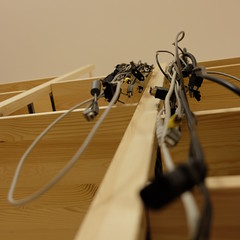When is a project dead?
One question that somebody asked me a few days back keeps me thinking for a while now. Mostly, because it should not have a clear answer. Have you ever had to ask yourself, what to do when your heart-project is at risk to co me to an end? A project that just dies, has had some serious problems. A dead-end, that leaves no next steps, along a final decision. In a way that no project goal materialized and no other milestone is reachable? If that is looming to happen, one should consider to check the project plan and answer a couple of questions about the failure. How did all the tasks and work packages depend on each other, that they made an entire project fail? Were some assumptions to optimistic? Was budget too tight? Was the project to ambitious?
me to an end? A project that just dies, has had some serious problems. A dead-end, that leaves no next steps, along a final decision. In a way that no project goal materialized and no other milestone is reachable? If that is looming to happen, one should consider to check the project plan and answer a couple of questions about the failure. How did all the tasks and work packages depend on each other, that they made an entire project fail? Were some assumptions to optimistic? Was budget too tight? Was the project to ambitious?
The show must go on
 Depending on size, no project is barely ever dead. Typically, a project consists of multiple components. Milestones, Tasks, Work-Packages, are just common terms for break downs structures of a project. Such fragments, re-used or re-arranged, can help achieving a modified goal. There are reasons, one or another milestone had difficulties. There are hard facts, like budgets, technical dependencies or necessities, required skills, availability of material or combinations of anything. And there are soft facts, like project team engagement, stakeholder opinion, even hubris may result in milestones not being reached.
Depending on size, no project is barely ever dead. Typically, a project consists of multiple components. Milestones, Tasks, Work-Packages, are just common terms for break downs structures of a project. Such fragments, re-used or re-arranged, can help achieving a modified goal. There are reasons, one or another milestone had difficulties. There are hard facts, like budgets, technical dependencies or necessities, required skills, availability of material or combinations of anything. And there are soft facts, like project team engagement, stakeholder opinion, even hubris may result in milestones not being reached.
Failure
A roadblock, identified early enough, allows to realign a project plan, to cope with any trouble, endangering tasks and milestones. In an iterative project approach, the project lead can change a goal, aligning with changing requirements. This way, the project may not reach it’s initially intended goal, but it will not fail in its totality. When a project dies, it will leave bad feelings with the budget owner, with stakeholder and the team. A goal that the team reached, maybe through a more creative approach, will still be a goal reached.